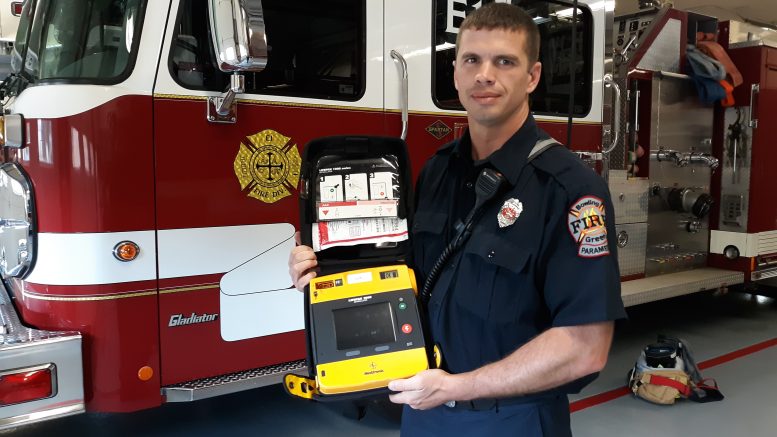Bowling Green Fire Division has been recognized for its care of cardiac patients – resulting in better chances of survival.
Mayor Mike Aspacher announced Tuesday evening that the fire division has received an American Heart Association Award. Those people unfortunate enough to have cardiac incidents, are fortunate if they experience them here in Bowling Green, the mayor said.
“I just want to publicly thank our fire division for their good work,” Aspacher said during a City Council meeting.
“I am very proud to announce that the Bowling Green Fire Division has been awarded the 2020 Mission: Lifeline Silver Plus award for pre-hospital cardiac care by the American Heart Association (AHA). This award is the result of a combined superior performance by paramedics at the Fire Division.”
Firefighter/Paramedic Brandon Westerman organized the effort, briefing division personnel of the criteria needed to achieve recognition, and then analyzed all pertinent EMS responses from 2019 to compile the data for AHA to demonstrate that BGFD excels in all the set criteria.
There are 5 total “measures” looked at by the AHA for this award. Measures 1 through 4 must be achieved by a score of 75% or greater for all four quarters to receive the Silver designation, which is the highest level that can be achieved in the first year of review.
The 5th measure, also known as the “Plus Measure,” must also be achieved by a score of 75% or greater in order to qualify for the “Plus” designation.
Fire Chief Bill Moorman informed the mayor that he intends to complete the Gold Plus designation application in 2021.
“I am very confident in the Fire Division’s ability to attain that level of recognition,” Aspacher said.
There are approximately 88 agencies recognized at the Silver Plus or Gold Plus level in Ohio. Of those, only five agencies are in the Northwest Ohio Region. (Bowling Green Fire Division, Huron Fire Department, Perkins Township Fire Department, Sandusky County EMS, and Sandusky Fire Department).
Following are the measures scored:
Measure 1: Percentage of patients with non-traumatic chest pain/ Acute Coronary Syndrome symptoms in patients ≥ 35 years of age, treated and transported by EMS who received a pre-hospital 12 Lead ECG.
This measure demonstrates patients meeting the criteria are receiving proper treatment in the field at all times. (BGFD Performance – 98.1% annual average)
Measure 2: The percentage of hospital transmissions suggesting a STEMI alert (or Cardiac Cath Lab Activation) that are performed ≤10 minutes of the first STEMI positive 12 lead ECG in the field.
This measure ensures prompt notification to the hospital so the team can prepare for emergency surgery as soon as that patient arrives. (BGFD Performance – 80% annual average)
Measure 3: Percentage of patients treated and transported directly to a STEMI Receiving Center, with EMS First Medical Contact to device time ≤90 minutes and/or EMS First Medical Contact to PCI≤120 minutes when transport time≥45 minutes and Door to Balloon ≤30 minutes.
This measure ensures the patients having heart attacks are getting to the correct facility, in an expedited fashion, and receiving the best definitive care to cure the problem within 90 minutes of placing the call to 911. This is a team effort between the agency and the hospital. (BGFD Performance – 100% annual average)
Measure 4: Percentage of STEMI patients treated and transported directly to a STEMI Referring Hospital, for reperfusion A) With a Door-to Needle time of ≤30 minutes OR B) Initial EMS FMC to PCI of the transfer for PCI patients ≤120 minutes.
BGFD is exempt from measure 4 because it transports all patients to STEMI Receiving Centers instead of STEMI Referring Hospitals. This ensures all patients receive definitive care in the quickest possible time without adding an extra step to the process.
Plus Measure: Of those patients who received a 12 Lead ECG (measure 1 numerator volume), the percentage of 12 Lead ECG’s performed ≤10 minutes of EMS First Medical Contact on patients with an initial complaint non-traumatic chest pain/ACS symptoms who are ≥ 35 years of age. (Required for reporting but not used for baseline recognition analysis)
The “Plus Measure” builds on Measure 1 to see that not only are all patients receiving a 12-lead EKG, but they are also receiving it within 10 minutes of crew arrival to the scene. (BGFD Performance – 87.7% annual average)





